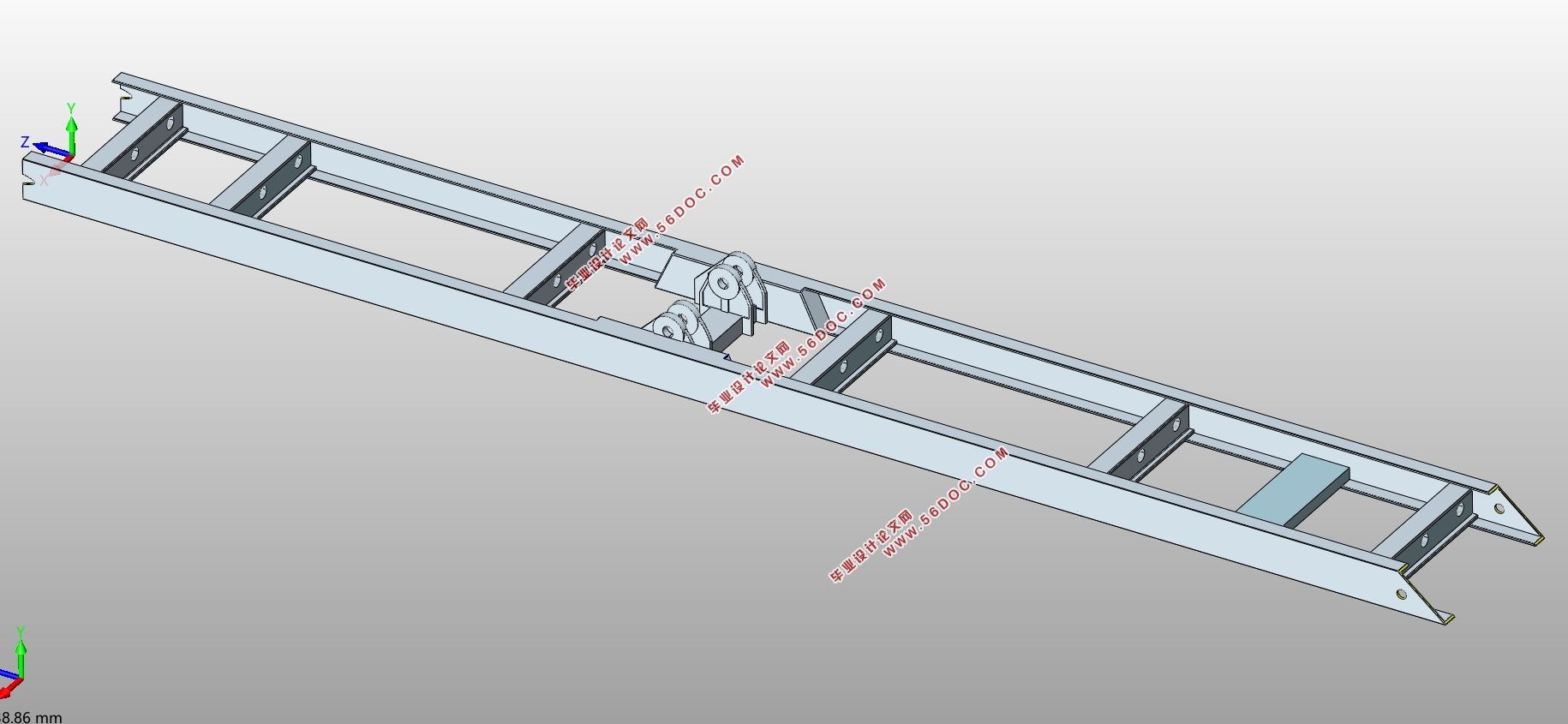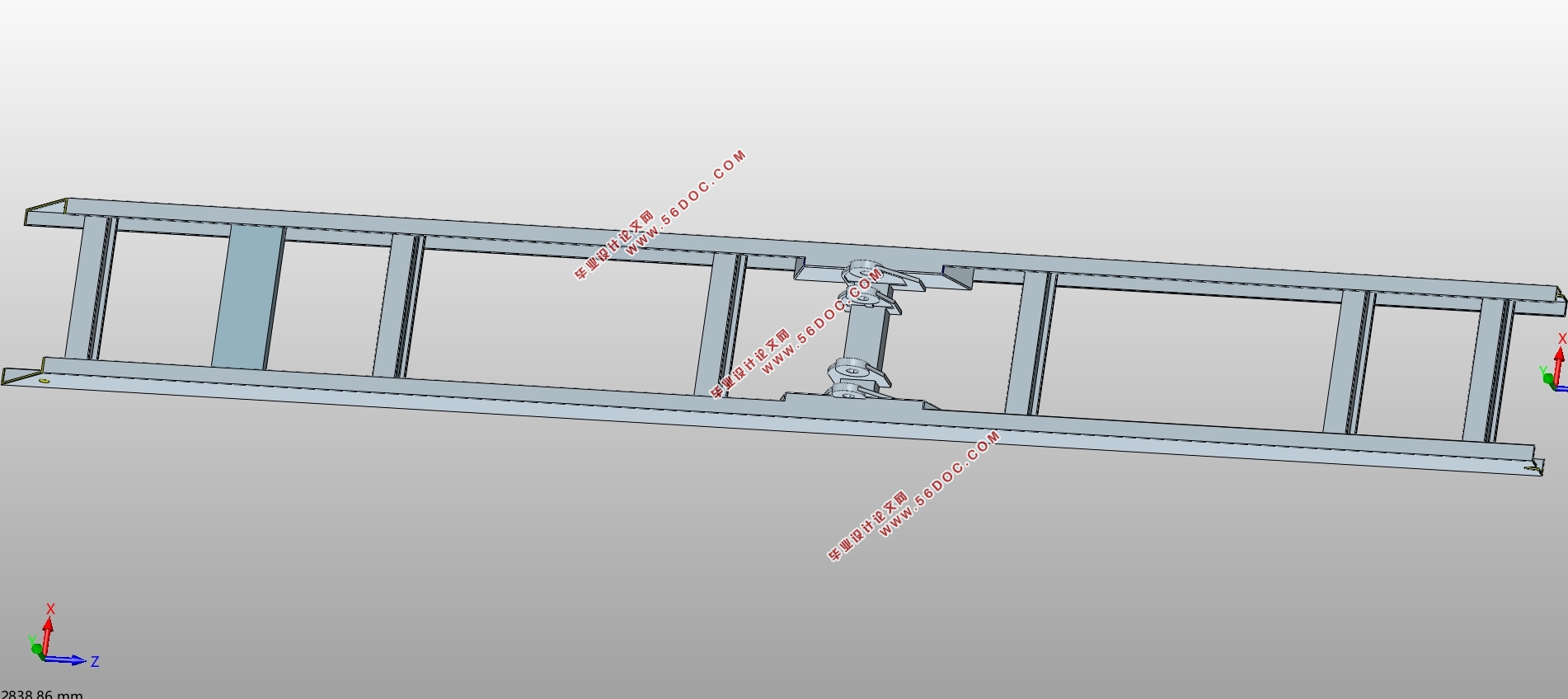轻型载货汽车车架三维建模及计算(含PROE三维图)
来源:56doc.com 资料编号:5D22484 资料等级:★★★★★ %E8%B5%84%E6%96%99%E7%BC%96%E5%8F%B7%EF%BC%9A5D22484
资料以网页介绍的为准,下载后不会有水印.资料仅供学习参考之用. 密 保 惠 帮助
资料介绍
轻型载货汽车车架三维建模及计算(含PROE三维图)(论文说明书10000字,PROE三维图)
摘要
汽车车架是连接在各车桥上类似桥梁的一种结构,车架是整个汽车的基础。其功用是支撑连接汽车的各个零部件和总成,并使它们保证正确的相对位置;承受来自车上和地面的各种静、动载荷。
本课题针对轻型汽车车架主要研究了以下几个方面的内容:
1.介绍了车架的结构类型及功用。
2.对车架作了基于Pro/e的三维实体建模,包括零件的绘制和整个部件的装配。
3.对车架进行了载荷分析,建立了车架的弯曲强度计算模型,并作了相应的弯矩图和剪力图。
关键词:汽车车架 实体建模 载荷分析
Abstract
Automobile frame is connected to the axle of a structure similar to the bridge, the frame is the basis of the entire vehicle. Its purpose is to support connected the various parts and assembly of motor vehicles and make them to ensure the correct relative position; under the car and the ground from a variety of static and dynamic load.
The main subject of study for the heavy vehicle frame the contents of the following areas:
1. Describes the structure of frame type and function。
2. on the frame were made based on Pro / e three-dimensional solid modeling, including parts of the drawing and the parts of the assembly.
3. on the frame for a load analysis, the bending strength of the frame model, and made the appropriate moment diagram and shear force diagram.
Key words: Automobile frame Solid Modeling Load Analysis



目录
摘要 I
Abstract II
第一章 绪论 1
1.1 本课题的目的和意义 1
1.2 车架技术研究进展和现况 1
1.2.1 国外发展现状 1
1.2.2 国内发展现状 2
第二章 车架结构概述 3
2.1 车架的结构形式 3
2.2 车架的结构设计 6
2.2.1 纵梁形式的确定 6
2.2.2 横梁形式的确定 6
2.2.3 纵梁与横梁的连接 7
第三章 车架设计三维建模 9
3.1 建模软件简介 9
3.2 车架三维建模 10
3.2.1建立大梁 10
3.2.2尾梁的建立 11
3.2.3横梁建立 11
3.2.4钢板弹簧的建模 12
3.2.5 车架零件的组装 13
第四章 车架的设计计算 14
4.1 车架的计算: 14
4.1.1纵梁弯曲应力 14
4.1.2局部扭转应力 15
4.1.3车架扭转时纵梁应力 16
4.2 车架载荷分析 16
4.2.1 对称的垂直动载荷 16
4.2.2 斜对称的动载荷 17
4.3 车架弯曲强度的计算 17
4.3.1 受力分析 17
4.3.2 弯矩的计算 17
4.3.3 强度验算 20
4.4 车架扭转应力的计算 22
4.4.1 受力分析 22
4.4.2 求最大扭矩 22
第五章 总结 25
参考文献 26
致谢 28
|







